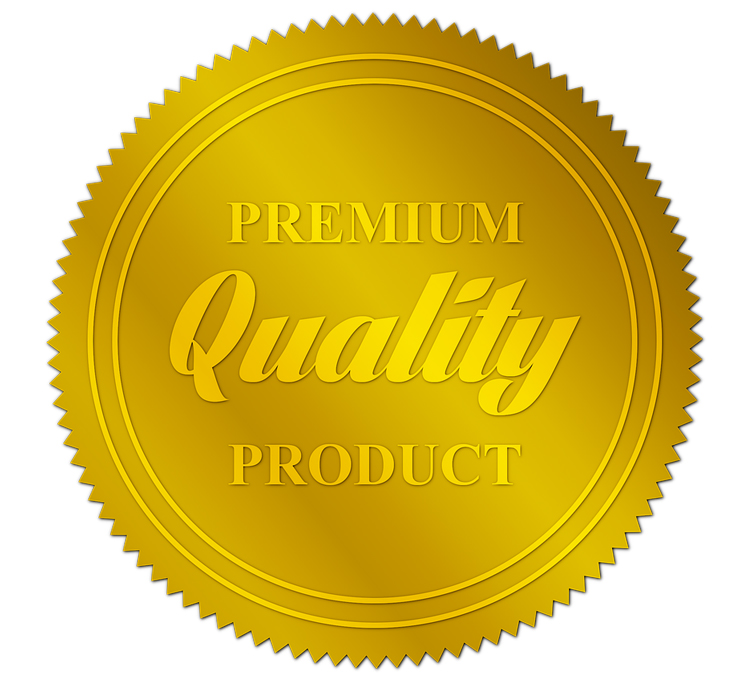Imagine that you’ve purchased a brand-new car. You’re thrilled with your new purchase, but as you drive it off the lot, you try to brake at the stop light. Nothing happens, and you go careening right into oncoming traffic… and you’d probably never buy another car from that maker again!
While hypothetical, this example serves to highlight the importance of quality assurance and quality control in manufacturing, as well as the potential damage poor quality can do to a brand’s reputation.
Both quality assurance and quality control in manufacturing are essential to ensuring that the products we purchase are safe, reliable, and fit for usage. When products fail to meet quality expectations, it can cause irreparable damage to a product or brand’s reputation.
In order to consistently achieve high-quality standards, manufacturers employ two related concepts, quality assurance (QA) and quality control (QC) to ensure their products live up to their customer’s expectations.
While the two terms are often used interchangeably, they refer to two different practices in quality management that ensure the highest standards are met.
Today, Manex will share our industry knowledge to take a deeper look into quality assurance vs quality control in manufacturing.

What is Quality Assurance in Manufacturing?
In the world of manufacturing, quality assurance is how businesses set themselves up for success.
Quality assurance in manufacturing is a proactive process that entails all the preparation and planning done to prevent mistakes and defects, ensuring the end product is of the highest quality.
It is a subset of the overall quality management system used by manufacturing companies to control and maintain quality throughout their manufacturing processes. Manufacturers (and organizations in other industries) use ISO 9000 to establish these quality standards.
Quality assurance in manufacturing often includes things like:
Setting Clear Specifications
Products should have clearly defined specifications, such as dimensions and weight, for every component used in the end product.
Using High-Quality Materials
The materials used must be able to meet the expectations for strength, durability, or other factors that would impact the quality of the end product.
Ensure Compliance with Regulations
Manufacturing quality assurance also entails the steps necessary to ensure that a product meets any regulatory requirements during the production process.
What is Quality Control in Manufacturing?
Quality control in manufacturing refers to the subset of quality management practices that provide a reactive approach to inspecting and measuring the quality of products at various stages of production.
Manufacturing quality control’s purpose is to identify deviations from the quality assurance standards, and to pinpoint and correct the causes. It’s an essential step in making sure products are fit for consumers.
Manufacturing quality control (QC) practices include:
Testing and Inspection
Using statistical measures, testing is done to ensure that products fall within the specifications denoted in the quality assurance phase, as well as checking for defects.
Training Teams to Identify Problems
A big part of quality control is empowering everyone within the production process to identify potential issues that can impact the quality of the end product.
Non-Conforming Materials
When products don’t meet specifications, they are denoted as “non-conforming material” (NCM), and must either be reworked into compliance, or discarded altogether.
How Quality Assurance and Quality Control Work Together
Quality assurance in manufacturing and quality control in manufacturing are both complementary aspects of the larger overall goal of quality management. They both fulfill critical objectives in the manufacturing process.
Now let’s take a deeper look at how they work together.
Quality Assurance Sets the Standards for Quality Control
Without standards set through quality assurance, quality control would not have any basis. It is the standards and specifications put forth by QA teams that provide the basis for QC teams to conduct their testing and inspections.
Quality Control Helps Improve Quality Assurance
Likewise, the data that is collected through quality control processes is used to enhance quality assurance standards. Using principles of continuous improvement, QC data helps QA teams analyze the causes of defects or errors, and identifies areas for improvement.
Data Sharing
When quality assurance and quality control teams share their data with one another, teams are able to make informed decisions that lead to overall quality improvements. The root cause of problems can be identified and can be proactively addressed before the issue escalates.
Why Invest in Quality Management Systems?
Manufacturing products is a costly endeavor. While you may already have a quality management system in place in your organization, it can pay dividends to overhaul your systems. Here’s why:
Reduce Defects and Product Waste
The goal of quality assurance in manufacturing is to prevent defects, and the goal of quality control is to catch them. If your quality management systems are out of date, the likelihood of defects increases, which leads to wasted materials and products. Revamping your QA and QC approaches will tighten your operations overall, and cut down on waste.
Increased Efficiency
When you’re producing less waste, you’re producing more quality products. For every defect found, the underlying issue must be rooted out and resolved. During that time, your manufacturing process will likely grind to a halt or be significantly hindered, costing you valuable time and money.
Increased Product Quality
Strengthening your quality assurance and quality control in manufacturing will help you achieve a greater consistency in your product quality, which can have a direct impact on customer satisfaction. Minimizing defects and maximizing quality is the best way to ensure your customers keep coming back.
Conclusion
Quality assurance in manufacturing and quality control are two similar, yet different, aspects of the larger goal of quality management.
Quality assurance in manufacturing focuses on preventative measures in the production process, including setting product specifications and material qualities. Whereas quality control in manufacturing focuses on testing, measuring and correcting to ensure products meet those standards. Both aspects play a pivotal role in producing the highest quality products.
Remember it only takes one instance of failure in manufacturing quality assurance or control to cause significant harm to your product or company’s reputation. If your facility needs help with quality management, consider partnering with Manex. We are experts in manufacturing excellence.
Manex’s team of experienced manufacturing industry professionals is among the most hired consultants in Northern California. We help organizations of all sizes streamline their operations to ensure the highest quality standards are met.
Contact Manex today for a free consultation to see how we can help you achieve consistent quality in your operations. Contact Manex at info@manexconsulting.com or call 877.336.2639


